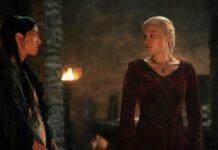We can understand the Ukraine War only from the lens of a historical European Game of Thrones.
The war is less about a single country than about the whole European security architecture or power balance. Since the fall of the Roman Empire, the Europeans have been more often at war with each other than at peace, which has held only for intermittent periods.
After Western Rome was destroyed by the Germanic tribes in AD 476, Christianity swept across Europe, but European kings and queens fought each other in between, fending off invasions from barbarians such as the Huns and Mongols. The kingdoms also fought over religion. The Byzantine Empire (AD 395-1453) was Orthodox, ruling from Constantinople, whereas the Catholic Church ruled from Rome, with the infamous Crusades against the Saracens in the 11th to 13th centuries that also saw the sacking of Constantinople in AD 1204.
As the economic historian Angus Maddison calculated, from AD 1500 — when Portugal and Spain discovered new routes to Africa, the East and the Americas — Europe, including Russia, had only 16.1% of the world population and 23.9% of world income, compared with China and India, which together had half of the world GDP and population respectively.
Over the next five centuries, Europe saw intense conflict between the land powers of France, Germany and Russia versus the maritime powers of Spain, Holland and Great Britain. In between, smaller powers like Portugal, Sweden, Poland and Austria/Hungary rose and fell. Unlike China, which had a unitary continental civilisation, no single European country managed to unify the continent. Instead, Britain used her maritime technology and skills to dominate the oceans, but skilfully played “divide and rule” with Europe and the rest of her colonies.
In the 16th century, the European wars took on a religious tone, with the rising Protestant kingdoms of Sweden, Prussia, Holland and Britain fighting the Catholic kingdoms of Spain, France and Italy. After 1600, competition spilled over to land grabs for colonies or trading rights in the Americas, Africa and South and Southeast Asia. This outward expansion was helped by superiority in military technology, with the conquest of Mogul India, even as China was conquered by the Manchus in 1644.
Intense European competition sparked the scientific and industrial revolutions, but also organisational and energy revolutions. In 1600, Britain contended with Holland as a naval power, fighting for control of the Southeast Asian spice trade. The British East India Company and the Dutch East India Company were chartered in 1600 and 1602 respectively. Thus began the first modern private companies designed to take over colonies, trade, shipping and treasure from the natives, Portuguese and the Spaniards alike. Technology, religion, greed and organisational power fused to carve up the world, forming what the West calls today “the rules-based order”. The West rules, the Rest pay and obey.
During this crucial period, the bloody Thirty Years’ War (1618-1648) between essentially Catholic and Protestant monarchies in Europe ended with the famous Treaty of Westphalia. This established the secular principle that each country was sovereign over its internal affairs (free of interference from the Catholic Church and free to establish its own national church or choose religious freedom). Reason and raw power conquered emotion. Finders were keepers and all wars were settled through treaties.
It was also during this period that the Russians emerged from being a peripheral power to a major player in European politics, particularly after Peter the Great (1672-1725) and Catherine the Great (1729-1796) made Russia a key market for sophisticated European goods, but also a major supplier of food and commodities. That situation has remained to this day.
Russia’s behaviour today stems from her bitter experiences with Europe. These were the failed Napoleonic invasion of Russia in 1812; the Russian Revolution of 1917; the failed Nazi Germany invasion of Russia in 1943; and the collapse of the Soviet Union in 1991. The Russians are proud empire builders, but bad economic reformers. They reached the Pacific Ocean in 1639, giving them the span of Eurasia from the Atlantic to the Pacific. Catherine the Great took Crimea from the Ottomans in 1783, opening up the Black Sea to Russian ships. At its peak in 1895, Russia covered 8.8 million square miles, second in size only to the British empire, which at its peak in 1920 controlled 13.7 million square miles and 23% of the world’s population.
In 1900, the Eight Allied armies (Britain, Germany, Japan, Russia, France, the US, Italy and Austria-Hungary) occupied Beijing in the midst of China’s century of humiliation and unequal treaties. By 1905, Japan proved that she was an industrial and naval power by crushing the Russian Pacific fleet in the famous Battle of Tsushima Straits.
World War I proved an unmitigated disaster for Europe. It started with the dismemberment of the ailing Ottoman Empire, with France, Germany and Britain fighting over Morocco (1905), the annexation of Bosnia and Herzegovina by Austria-Hungary; the Italo-Turkish war (1911) and, finally, fighting over the Balkans.
By 1914, Germany, with Austria-Hungary and the Ottomans (the Central Powers), faced Britain/France on the Western front and Russia on the Eastern side. Economic historian Paul Kennedy (author of The Rise and Fall of the Great Powers, 1987) showed that although Russia was the population giant (171 million in 1913), her national income was only US$7 billion. The British Allies had US$30 billion in national income and 347 million people, more than double the German side of US$15 billion in national income and 117 million people. This looked like an unequal fight, but German military and industrial skills were sufficient to fight the Allies to a standstill, until the US, already a behemoth with a national income of US$37 billion and 98 million in population, joined the war in 1917. After that, Germany’s defeat was a foregone conclusion.
The Russians suffered 3.6 million casualties in World War I. Such heavy losses caused a weakened Tsar to abdicate in 1917. This led to the Bolshevik October Revolution, which pulled Russia out of the war.
WWI destroyed four monarchies: Russian, Ottoman, German and Austrian. Europe exhausted herself, so global power shifted to a rising US. Unfortunately, the 1919 Treaty of Versailles punished the Germans so much that, by 1934, Hitler came to power under a nationalist (Nazi) platform, re-armed, signed a 1939 treaty with the Soviet Union under Stalin, and then started WWII. This time round, the Germans were allied with the fascist Italians and Japanese.
When Germany launched a massive tank campaign against the Soviet Union in 1941, reaching almost the gates of Moscow, the Russians lost up to 27 million people to defend themselves, which is why they feel that the West owed them respect.
In essence, after two debilitating world wars, Europe and Britain emerged broke and second-rate players, with two continental sized powers (the US and the Communist bloc) eyeing each other.
This potted history explains the gap between the Russian and American/European elites. In each encounter with Western Europe and America, Russia suffered near defeat and invasion, including collapse. When the Soviet Union collapsed in 1991, Russia was totally humiliated. The Russian elites thus saw the eastward expansion of the North Atlantic Treaty Organisation (Nato) as threatening to Russia’s existence. If Ukraine joined Nato, missiles and tanks would be stationed only 300 miles away from Moscow.
Thus, there can be no European peace, without the Russians and the Americans sitting down to agree on the future of the European power balance.
The current power balance looks unequal. Ukraine (41 million people and US$66 billion GDP) is too small to fight Russia (145 million and US$1.6 trillion GDP), but her army initially fought better than expected. Nato (949 million people and US$44.2 trillion in GDP) outclasses Russia, but her nuclear weapons mean that Nato would not want to engage in mutually assured nuclear destruction (MAD).
In other words, Ukraine is a Nato proxy war to wear down Russia. The effect will be like the war of attrition during WWI when, ultimately, industrial power made the difference. So far, Nato seems to have overestimated Russian military capacity, but underestimated Russian resilience against economic sanctions with the ability to inflict high economic costs on Nato in terms of energy and food inflation. The rest of the world seems to prefer to sit on the sidelines.
Rhetoric and disinformation aside, Nato is, of course, worried that if it drives China and Russia into one camp, the balance of power would be more equal (1.55 billion population and US$16.3 trillion in GDP). The longer the prolonged war of attrition lasts, the greater the probability of an accidental or intentional nuclear conflict. This explains why over time, even Germany and France want to see some kind of negotiations to end the fighting.
My observation is that when Nato declares that it must defend Ukraine (a non-Nato member) on a matter of principle, it is acting emotionally, like conducting a historical Crusade against the non-believers. Realists understand that no good can come out of a prolonged war of attrition. Our common enemy is climate warming, not fighting each other like alphas on a burning planet.
Unfortunately, we do not have a generation of statesmen who are able to negotiate peace, as each is more concerned with his own political survival. When you call Putin a devil, you block the way to peace, because you cannot be seen to negotiate with a devil.
We cannot predict how the Ukraine war will unfold, because there are too many unknowns waiting to happen. The disinformation from both sides is so bad that there is no objective source of information on conditions to negotiate peace. In peace, someone will have to lose face or lose ground. The biggest mistake is to believe your own lies and then underestimate the other side.
The point I want to make is that in every quarrel, both sides have their arguments, right or wrong. Taking an emotional stand on matters of absolute principle (that the other side is wrong), rather than compromise on a rational and pragmatic basis, means that it would be impossible to arrive at any settlement except through more violence. At some point of time, the system as a whole will be hurt, without benefit to any party. As the American soldier said in the Vietnam War, “We must destroy the village in order to save it.” Every day of fighting is destroying not just Ukraine but also inflicting costs on the rest of the world.
Winter is coming. The real European Game of Thrones has no magic queens or dragons except very weak leaders. Sadly, this is not fiction, but a nightmare that we all have to confront.
Tan Sri Andrew Sheng writes on global issues that affect investors



















![[Book Review] The Blade Itself (The First Law Trilogy) by Joe Abercrombie](https://bendthekneegot.com/wp-content/uploads/2018/01/1516047103_maxresdefault-218x150.jpg)
















